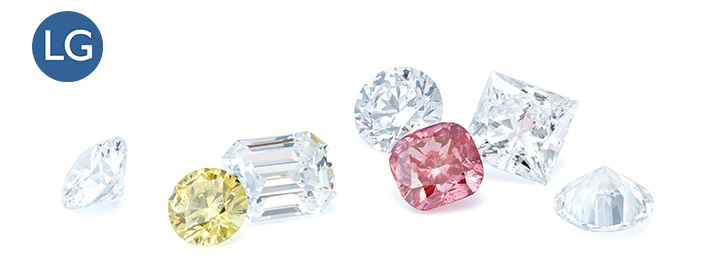Diamond Education: How are Lab-Grown Diamonds Created? Learn the differences between CVD, HPHT, and their respective growing processes
Posted by Julie Turpening on
100% optically, chemically, and physically identical to mined Diamonds
Lab-grown Diamonds are not simulants. Scientists create them in a lab. They start with rough crystals, and use HPHT (High Pressure High Temperature) or CVD (Chemical Vapor Deposition) — sometimes both methods. Lab-grown Diamonds can cost 30-50% less than mined Diamonds.

Chemical Vapor Deposition (CVD)
The CVD process was invented first— in 1952 by William Eversole at Union Carbide. This process allows diamonds to grow in an entirely different way than the HPHT process. CVD starts with a natural diamond slice (or seed) placed in a chamber and exposed to less extreme temperatures (approximately 1,200–3,000 degrees Fahrenheit) and lower pressure (100 – 550 PSI).
Recent advancements have made this growth process more advantageous. Methane and hydrogen gas are injected into the chamber and combined with high heat. The electrons separate, forming plasma gas. The freed carbon then rains down on the seed, growing new diamond crystals. Typically, this process produces brown or gray diamonds, which are turned colorless through an HPHT annealing process. This process takes several days to a few weeks.
High-Pressure High-Temperature (HPHT)
The HPHT process grows diamonds using diamond presses, machines that mimic the extreme conditions that form diamonds within Earth’s upper mantle: intense pressure (725,000 – 870,000 PSI) and intense heat (2,300–2,900 degrees Fahrenheit). In this process, diamond source powder dissolves in molten metal flux and deposits on diamond seed crystals.
This process dates back to 1954. By the 1970s, General Electric started commercially producing “gem-quality” HPHT lab-grown diamonds. In the following years, General Electric and other companies grew larger sizes of non-gem-quality diamonds strictly for industrial use. Since then, HPHT technology has come a long way, now growing lab-grown diamonds for use in jewelry. This process takes several days to a few weeks.
Share this post
- 0 comment
- Tags: CVD Lab-grown Diamonds, HPHT Lab-grown Diamonds, Lab-Grown Diamond, Near Colorless Lab-grown Diamonds
